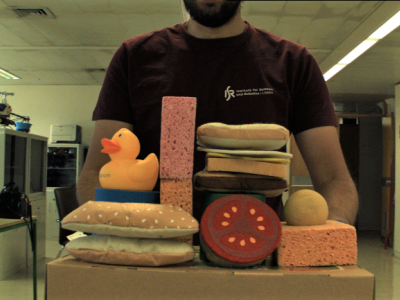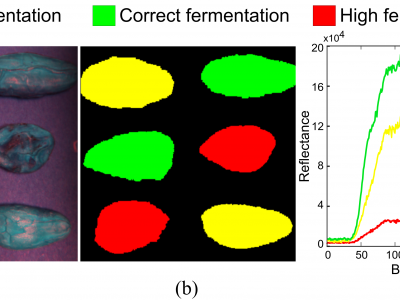Image Processing

n/a
- Categories:
 101 Views
101 ViewsCalibration datasets used in the article Standard Plenoptic Cameras Mapping to Camera Arrays and Calibration based on DLT. These datasets were acquired with a Lytro Illum camera using two calibration grids with different sizes: 8 × 6 grid of 211 × 159 mm (Big Pattern) with approximately 26.5 mm cells, and 20×20 grid of 121.5 × 122 mm (Small Pattern) with approximately 6.1 mm cells. Each dataset acquired is composed of 66 fully observable poses of the calibration pattern.
- Categories:
 835 Views
835 ViewsResearch on damage detection of road surfaces has been an active area of research, but most studies have focused so far on the detection of the presence of damages. However, in real-world scenarios, road managers need to clearly understand the type of damage and its extent in order to take effective action in advance or to allocate the necessary resources. Moreover, currently there are few uniform and openly available road damage datasets, leading to a lack of a common benchmark for road damage detection.
- Categories:
 4231 Views
4231 ViewsThe target scene consists of a black card with six cocoa beans of three different fermentation levels (High, correct, and low fermentation), two beans for each class, whose false-color composite is shown in the provided Figure (a), ground-truth map is shown in Fig. (b), and Fig. (c) presents its representative spectral signatures. The spectral image was acquired by the AVT Stingray F-080B camera by acquiring one band each time from 350 - 950 nm. The acquired image has a spatial resolution of 1096x712 pixels and 300 spectral bands of 2 nm width.
- Categories:
 814 Views
814 Views
This data set is regarding the paper submitted to the IEEE Transactions on Molecular, Biological, and Multi-Scale Communications. The title of the paper is 'Molecular Signal Tracking and Detection Methods in Fluid Dynamic Channels' with the ID of TMBMC-TPS-19-0014.R2. The data are images taken from the particle image velocimetry (PIV) method and the Planar Laser-Induced fluorescence (PLIF) method. The images are being used to describe these two experimental methods for the molecular communication community.
- Categories:
 197 Views
197 ViewsThe color fractal images with independent RGB color components were generated using the midpoint displacement alogrithm, applied independenlty on each RGB color component. This data set contains 9 images of varying complexity, expressed as the color fractal dimension, as a function of the Hurst coefficient that was varied from 0.1 to 0.9 in steps of 0.1. Each fractal object was independently rendered as a color image. The data set is intented to be used as a reference data set for color texture complexity analysis when considering fractal dimension estimation.
- Categories:
 655 Views
655 ViewsThe orchid flower dataset was selected from the northern part of Thailand. The dataset contains Thai native orchid flowers, and each class contains at least 20 samples. The orchid dataset including 52 species and the visual characteristics of the flower are varying in terms of shape, color, texture, size, and the other parts of the orchid plant like a leaf, inflorescence, roots, and surroundings. All images are taken from many devices such as a digital camera, a mobile phone, and other equipment. The orchids dataset contains 3,559 images from 52 categories.
- Categories:
 2755 Views
2755 Views
This is a dataset consisting of 8 features extracted from 70,000 monochromatic still images adapted from the Genome Project Standford's database, that are labeled in two classes: LSB steganography (1) and without LSB Steganography (0). These features are Kurtosis, Skewness, Standard Deviation, Range, Median, Geometric Mean, Hjorth Mobility, and Hjorth Complexity, all extracted from the histograms of the still images, including random spatial transformations. The steganographic function embeds five types of payloads, from 0.1 to 0.5.
- Categories:
 2462 Views
2462 Views




